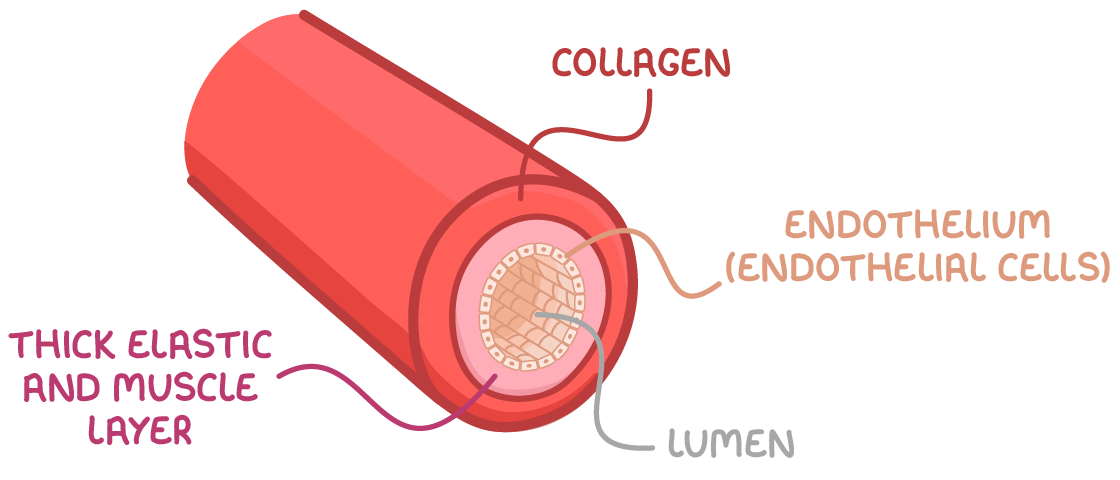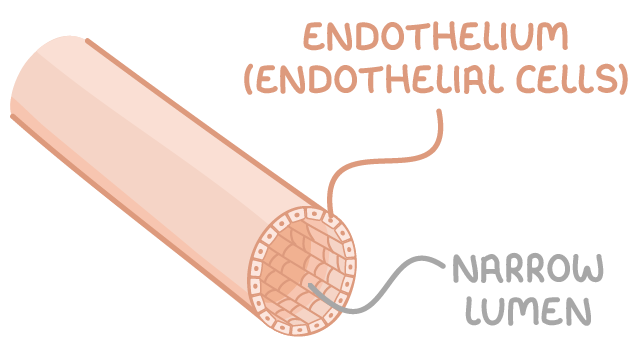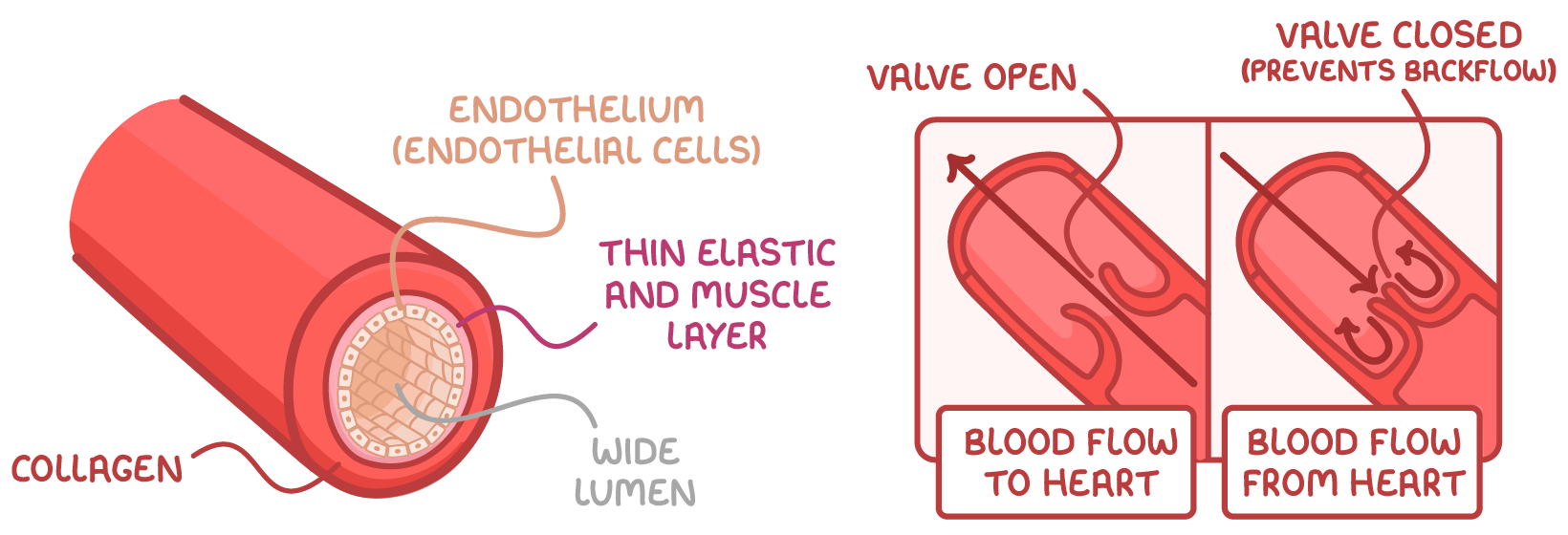Blood Vessels
This lesson covers:
- The main types of blood vessel
- The structure and function of arteries and arterioles
- The structure and function of capillaries
- The structure and function of veins and venules
Blood vessels and their functions
There are five main types of blood vessels in the mammalian circulatory system.
These main types of blood vessels are:
- Arteries - Carry blood away from the heart.
- Arterioles - Carry blood from arteries into capillaries.
- Capillaries - Site of diffusion between blood and body tissues.
- Venules - Carry blood from capillaries into veins.
- Veins - Return blood to the heart.
Arteries and arterioles
Arteries are adapted to carry blood at high pressure away from the heart.

Adaptations of arteries:
- Collagen - Provides strength to prevent the vessel from bursting and to maintain vessel shape.
- Elastic fibres - Contain elastin that lets them stretch and recoil to minimise changes in pressure.
- Thick smooth muscle layer - Contracts/relaxes to constrict/dilate the lumen and control blood flow.
Arterioles are smaller than arteries, but with a comparatively larger lumen. Their walls have more smooth muscle and less elastin as they do not need to withstand such high pressures.
Vasoconstriction and vasodilation
The smooth muscle in arteries and arterioles means they are adapted to control the blood flow through them.
They do this through the following mechanisms:
- Vasoconstriction - Smooth muscle contracts, constricting the blood vessel and decreasing blood flow.
- Vasodilation - Smooth muscle relaxes, dilating the blood vessel and increasing blood flow.
Capillaries
Capillaries form extensive networks between arterioles and venules, providing an area between blood and tissues where exchange of substances like gases and nutrients can occur.

Adaptations of capillaries:
- Lumen is very narrow - This allows red blood cells to be close to body cells.
- Walls are thin - Substances can be exchanged across a short distance by diffusion.
- Highly branched - This provides a large surface area for diffusion.
Veins and venules
Veins are adapted to carry blood towards the heart at low pressure.

Adaptations of veins:
- Collagen - Provides strength to prevent the vessel from bursting and maintain vessel shape.
- Little smooth muscle and elastic fibre - Not much is needed due to low blood pressure, and thinner walls allow veins to be easily compressed, aiding the flow of blood.
- Valves - Pocket valves shut to prevent the backflow of blood when veins are squeezed by surrounding skeletal muscle.
The pocket valves in veins are similar in structure to valves in the heart, but pocket valves are the only type of valve controlled by skeletal muscle.
Venules are smaller than veins. They have very thin walls, and very little smooth muscle. Both venules and veins have valves.